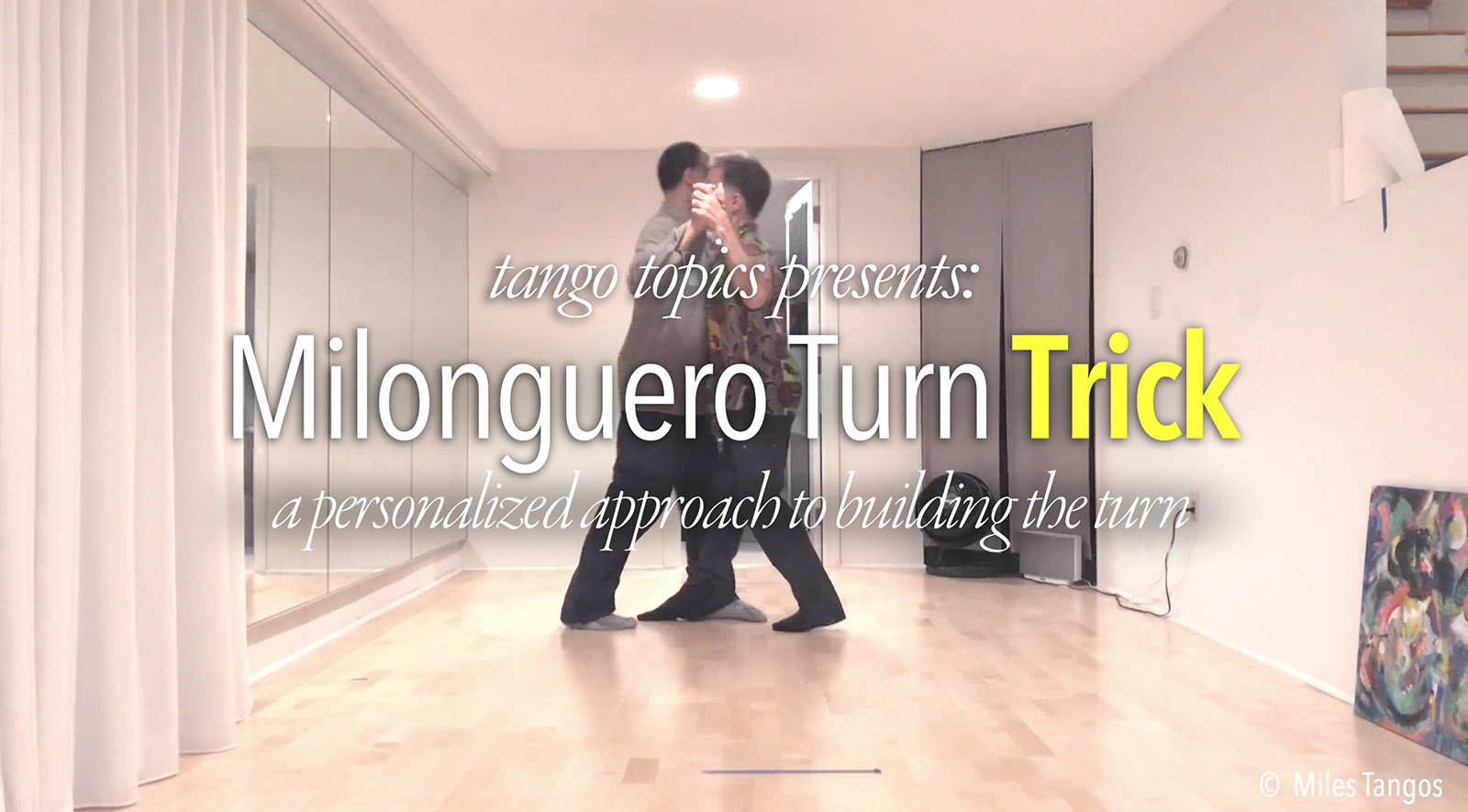You’re out social dancing, and you’ve been practicing your Milonguero Turns with your favorite partner, and you feel like you’ve got it down, so now it’s time to take it of the lab and put it on the floor and try it with other dancing partners. This, by the way, is not how we want to create a good practice regime. We do have a treatise on what to practice and how to practice. But more on that later in another article. 😉 You’ve accepted a request to dance with someone else, it’s a Di Sarli Tango tanda, and you smile, and you walk to the floor with your partner, engaging a the Lead’s Cabeceo! Stepping onto the floor, and engaging in your partner’s embrace, you settle into each other. Readjust, hopefully employing the “The Readjustment Phase” of the dance, a very important component, and then begin to dance, slowly, patiently, cautiously figuring out each other, rather than throwing every known piece of vocabulary at your partner in the first 30 seconds. Or some crazy cool move that you think is cool but your partner may find somewhat ‘annoying’ at best. Especially dancing to Di Sarli. Tsk, tsk, tsk. It’s around this time near the end of the first musical paragraph that your partner initiates their first turn. If you’re Leading you discover immediately that what your partner heard as a turn was in fact the Follower’s Molinete and not the Milonguero Turn that you intended. If you’re Following at this point, you’re wondering why the Lead keeps turning or why the Lead is squeezing the living daylights out of your back and what that’s all about. As far as you’re concerned you’re doing what the Lead asked invoking a Milonguero Turn by default because you know the rule but they keep squeezing and turning. Uuuugh!
Scenario over!
Today’s Tango Topic deals with that moment right there where there is obviously some confusion, a bit of a hiccup in what would have otherwise been a lovely and near perfect dancing experience.
The Milonguero Turn is one of Tango’s underused but extremely elegant turns. However it comes with a tiny little problem embedded in it. The problem ? Default Behavior and Default Expectation. The Default Behavior ? The Follower’s Molinete as the response to a turn. The Molinete/Giro structure is one of the seven basic moves of Argentine Tango that is used so often and with such ubiquity that we almost don’t even think about it anymore. It’s just that we start turning and magically a Follower’s Molinete occurs. However, as in the case above, what happens when the Lead wants to invoke a Milonguero Turn instead ? A hiccup is what happens and from there things get ugly quickly.
That’s what Today’s Tango Topic is all about. So without further yappment, here’s Today’s Tango Topic on The Milonguero Turn Trick – Personalized.
What is the Milonguero Turn Trick ? First and foremost, the Trick itself isn’t a ‘trick’, it’s more of a reliance on Follower Default behaviors. Secondly, the ‘Trick’ only solves the first major hurdle of the Turn itself – The Follower’s Back Cross.
The problem with the Milonguero Turn, and it is a problem, is the opening step, the Follower’s Back Cross. By default, the Follower will not want to cross behind or back cross, unless this is their default turn or default behavior. Truthfully there are very few Milonguero Turn default based Followers. Usually the Follower has been trained in the Molinete/Giro structure as their default. So the moment that the Lead starts a turn, the Follower thinks and responds with “Molinete”. This is not desirable. While the Molinete is a very sexy turn, it’s not what we’re wanting out of the Follower at all. We ideally want the cleaner, less stressful, Milonguero Turn for a whole bunch of reasons.
Before you go any further you’re going to ask, “Well, if the Lead led it then the Follower should follow what was led!”. True to a degree but then again, you’re dealing with default behavior, and that stuff is insanely difficult to override, most of the time. That’s why this ‘Trick’ exists.
The opening back cross presents a problem: How to generate it ? And that’s where the Milonguero Turn ‘Trick’ comes in. It says, “Fine…the Follower has default behaviors, one of them is to come to collection, still another is not to a leg fly away from them, still another they have a desire to make things as small as possible, less work”. All of these default behaviors can be used to the Lead’s advantage if properly invoked. And that’s what the Milonguero Turn Trick does, it invokes all three of those defaults and overrides the Follower’s desire to Molinete. It supersedes it almost immediately so that the Follower never, ever wants to Molinete!
In its simplest form the Trick is a Simple Sacada, but a fully unrealized one. The reason this is said, is because a Simple Sacada should and would take the place of the Follower, but it doesn’t. In its more complex form, it overrides the Follower’s default behavior to Molinete and replaces it with a back cross.
Remember that the turn trick only solves ONE problem – Initiating the Follower’s Back Cross. It doesn’t solve the entire Milonguero Turn, you still have to learn to lead and follow those things.

Notation: When the “What is … ” section of an article is blue, that means that the article is freely available to registered, users. When the section is yellow, the article is still free, but the video is for paid users. 😉
Why this video exists ? It exists for 3 reasons. 1.) It was part of a longer lesson for this particular student on the Milonguero Turn, and Elements of Turning itself. 2.) To give the student a reminder tutorial for when I wasn’t there. 3.) I taught a Milonguero Turn class rather recently and then discovered this a few days after the class, and realized that this is actually a perfect reminder for anyone that wants to play with the Milonguero Turn on how to build it and what should happen.
Further this video exists with the student’s consent. So don’t get all persnickety that we’re showing you a private lesson without the student’s knowledge. They’re fully aware of the video and fully endorse it.

